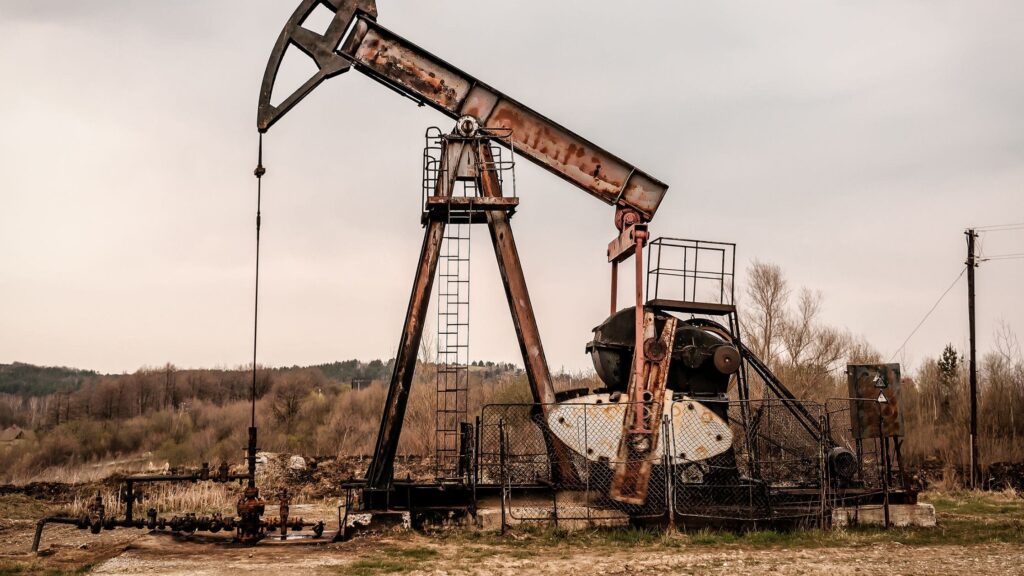How do Mineral Rights Work in California?

In the diverse landscape of California, mineral rights emerge as a pivotal aspect of property law, often overshadowed by the state’s scenic beauty and cultural prominence. Mineral rights in California, as in other parts of the United States, represent a specific type of real property right. These rights are distinct from surface rights, granting the holder legal authority to extract and utilize minerals beneath the land’s surface.
The concept of mineral rights in California is underpinned by a complex legal framework, where these rights can be owned separately from the land itself. This separation creates a unique dynamic between the surface rights owner and the mineral rights owner, often leading to intricate negotiations and agreements. The mineral rights include a range of resources, from oil and gas to precious metals like gold, extending to less conspicuous commodities like coal and natural gas.
In this realm, the rights owner holds the key to exploration and production, subject to state and federal regulations. This not only includes the physical extraction of minerals but also encompasses the legal right to lease or sell these rights, providing a potential source of income or investment opportunity.
Mineral Rights in California
Delving deeper into California’s mineral rights, it’s crucial to understand their scope and limitations. These rights typically include the authority to conduct activities like drilling, mining, and extraction of minerals. However, this authority is not absolute and is often bounded by various legal and environmental constraints.
Mineral rights in California encompass a broad spectrum of minerals, from the well-known oil and gas reserves to other vital resources like gold, silver, and even lesser-known minerals like lignite and phosphate. The holder of these rights has the discretion to exploit these resources, either through direct extraction or by leasing the rights to another party.
Moreover, owning mineral rights in California also involves responsibilities. Rights owners must adhere to state and federal laws governing mineral extraction, including obtaining necessary permits, conducting environmentally responsible operations, and paying relevant taxes and royalties.
The value of these rights can fluctuate, influenced by factors like market demand, technological advancements in extraction methods, and geological surveys revealing the quantity and quality of the underlying minerals.
The dynamic between mineral rights and surface rights in California is particularly noteworthy. In cases where these rights are held by different parties, it’s essential to establish clear agreements detailing access rights, compensation, and liability issues. This relationship is governed by a legal framework that aims to protect the interests of both surface and mineral rights owners while ensuring responsible resource management.
Surface rights vs mineral rights in California
The distinction between surface rights and mineral rights in California is a fundamental concept in property law, impacting landowners, real estate developers, and mineral rights owners alike. Surface rights refer to the ownership and use of the land’s surface, including any structures built upon it, whereas mineral rights pertain to the ownership and exploitation of the minerals beneath the surface.
In many instances, these rights are held by different entities, leading to a dual-layered ownership structure. This separation can result in scenarios where a landowner may have full control over the surface activities but no claim to the valuable minerals lying beneath. Conversely, a mineral rights owner may have the legal authority to extract resources from a property they do not physically own.
The interaction between these two types of rights in California is governed by a set of legal principles and statutes. For instance, while a mineral rights owner has the right to access and extract minerals, they must do so without causing unreasonable harm to the surface. This necessitates a delicate balance, often requiring negotiations and agreements to mitigate potential conflicts.
The legal landscape in California provides mechanisms for resolving disputes between surface rights and mineral rights owners. These include legal provisions for compensation, access agreements, and in some cases, court interventions to balance the competing interests. This framework ensures that while mineral rights owners can capitalize on their assets, surface rights owners are not unduly burdened.
What are Major Oil and Gas Fields in California?
California, a state rich in natural resources, is home to some of the nation’s most significant oil and gas fields. These fields not only contribute substantially to the state’s economy but also play a critical role in the energy sector of the United States. Let’s explore some of the major oil and gas fields in California, each with its unique geographical and historical significance.
- The Kern River Oil Field: Located in Kern County, this field is one of the largest and oldest in California. It’s known for its heavy crude oil and has been a key production site since its discovery in the late 19th century.
- Elk Hills Oil Field: Also situated in Kern County, Elk Hills stands out for its significant natural gas reserves alongside oil. It has been a central point of energy production since the early 20th century.
- Wilmington Oil Field: Near the Los Angeles Basin, this field is renowned for being among the largest urban oil fields in the United States. Discovered in 1932, it extends both onshore and offshore.
- Lost Hills Oil Field: Located in the northwestern part of Kern County, Lost Hills is notable for its considerable oil reserves. It has been in operation since its discovery in 1910.
What are the Main Minerals Found in California?
Beyond oil and gas, California’s geology is composed of a myriad of minerals, each contributing to the state’s diverse mineral wealth. From gold that fueled the 19th-century gold rush to rare earth elements critical for modern technology, California’s mineral deposits are both historic and economically significant.
- Gold: Synonymous with California’s history, gold was the bedrock of the 1849 Gold Rush. It’s primarily found in the Sierra Nevada and Klamath Mountains.
- Silver: Often discovered alongside gold, silver in California has been a valuable resource for centuries, used in various industries from jewelry to electronics.
- Copper: Found in the Sierra Nevada, the San Bernardino Mountains, and other areas, copper is essential for electrical wiring and plumbing.
- Quartz: Common in California’s geology, quartz is used in making glass, electronics, and as a gemstone.
- Boron: California is one of the world’s largest sources of boron, a mineral used in glassmaking, agriculture, and as a cleaning agent.
How do I find out who owns mineral rights in California?
Identifying the owner of mineral rights in California is a process that involves several steps, each critical in establishing legal ownership and understanding the complexities involved in mineral rights transactions. This process is crucial for anyone looking to buy property, lease mineral rights, or simply understand their property’s full potential.
- Consult County Recorder’s Office: Begin by visiting the county recorder’s office where the property is located. They maintain land records and can provide information on current and historical ownership of mineral rights.
- Examine Property Deeds: Review the property deeds, which can be obtained from the county recorder. These documents often contain information on whether mineral rights have been severed from the property.
- Check for Prior Mineral Rights Transactions: Look for any prior sales, leases, or transfers of mineral rights. These records can sometimes be found online or at the county recorder’s office.
- Seek Assistance from a Title Company: A title company can conduct a thorough search and provide a title report indicating who owns the mineral rights.
- Hire a Professional Landman or Attorney: For more complex situations, consider hiring a professional landman or a real estate attorney who specializes in mineral rights.
How to search for mineral rights records in California?
Searching for mineral rights records in California requires a structured approach, often involving multiple resources and some understanding of legal documents related to property and mineral rights.
- Access the California Geological Survey (CGS) Website: Start by visiting the CGS website for general information on mineral resources in California.
- Utilize Online Land Records: Many California counties offer online access to land records, where you can search for mineral rights information.
- Visit the County Assessor’s Office: The county assessor’s office can provide property maps and other resources that indicate mineral rights ownership.
- Explore BLM Records: Check the Bureau of Land Management (BLM) database for federal land records and mineral rights information in California.
- Consult Historical Land Records: Sometimes, historical land records, available at local libraries or historical societies, can offer insights into past mineral rights ownership.
How do I claim mineral rights in California?
Claiming mineral rights in California is governed by both state and federal laws, especially if the rights pertain to public lands. This process requires careful navigation of legal requirements and often involves several steps:
- Determine Land Ownership: Ascertain whether the land is privately owned or public. For public lands, you’ll need to follow specific federal or state procedures.
- File a Mining Claim (For Public Lands): If the land is public, file a mining claim with the BLM. This involves locating the claim, marking the boundaries, and recording it with both the BLM and the county recorder.
- Negotiate with Private Landowners (For Private Lands): If the land is privately owned, you’ll need to negotiate directly with the landowner to purchase or lease the mineral rights.
- Conduct a Title Search: Perform a thorough title search to ensure there are no existing claims or disputes over the mineral rights.
- Consult with a Mineral Rights Attorney: Given the complexities involved, consulting with an attorney who specializes in mineral rights in California is advisable.
How does mineral rights inheritance work in California?
Inheritance of mineral rights in California is an intricate process, intertwined with state laws and regulations. This aspect of property law becomes particularly significant in the context of estate planning and asset distribution.
Understanding how mineral rights are inherited in California requires a detailed exploration of the legal framework and common practices involved.
Mineral rights, like other forms of real property, can be bequeathed through a will or trust. Upon the death of the rights holder, these rights typically pass to the heirs or beneficiaries named in the estate plan. If no specific mention is made of the mineral rights, they generally become part of the deceased’s residual estate and are distributed according to the terms of the will or, if no will exists, under California’s intestate succession laws.
One unique aspect of mineral rights inheritance in California is the potential division of these rights among multiple heirs. This can lead to a situation where several individuals own a fractional interest in the mineral rights, complicating management and decision-making processes. In such cases, clear communication and legal agreements among the co-owners are essential to effectively manage and exploit these rights.
Additionally, heirs of mineral rights must be aware of their responsibilities, including paying property taxes on the rights and complying with any existing leases or agreements. They should also be mindful of environmental regulations and zoning laws that may impact their ability to extract minerals.
For those inheriting mineral rights in California, it is advisable to consult with an attorney specializing in mineral law to navigate the complexities of property transfer, tax implications, and legal compliance.
Do you have to pay taxes on mineral rights in California?
Taxation of mineral rights in California is a topic of significant importance for rights owners. Understanding the tax obligations associated with owning and exploiting mineral rights is crucial for compliance and financial planning.
In California, mineral rights are subject to property tax, much like any other real estate asset. When mineral rights are producing income, such as from oil and gas extraction, the rights are assessed based on the income they generate. This assessment takes into account the current and future potential income from the mineral resources, discounted to present value.
For example, if an individual owns mineral rights in a productive oil field in Kern County, the county assessor will determine the value of these rights based on factors such as the current production levels, the price of oil, and the estimated remaining reserves. The owner will then be required to pay property taxes based on this assessed value.
Additionally, income derived from mineral rights, such as royalties from oil and gas production, is subject to federal and state income tax. It’s important for mineral rights owners to maintain accurate records of their income and expenses related to their mineral rights, as these will be necessary for tax reporting purposes.
It’s also worth noting that transferring mineral rights can have tax implications. For instance, selling mineral rights typically results in capital gains tax on the difference between the sale price and the original acquisition cost. Inheritance of mineral rights, on the other hand, may trigger estate taxes if the value of the estate exceeds the federal exemption limit.
How much are mineral rights worth in California?
Mineral rights in California can range from being highly lucrative to relatively nominal in value, depending on the underlying assets. The state’s diverse geology means that mineral rights can pertain to a variety of resources, from oil and gas reserves to precious metals like gold and silver, as well as less visible but equally significant minerals like boron and lithium.
The value of these rights is intrinsically tied to the potential revenue they can generate. For producing mineral rights, where active extraction is occurring or likely to occur, the value is typically higher. Conversely, non-producing mineral rights, which have potential but no current production, tend to be valued lower.
How much are mineral rights worth per acre in California?
Prices can range from a few hundred to several thousand dollars per acre, depending on factors such as the type of mineral, location, and current market demand.
For example, in areas with established oil and gas production, such as parts of Kern County or the Los Angeles Basin, mineral rights can fetch higher prices, sometimes exceeding $10,000 per acre. In contrast, areas with less proven resources or in regions where mineral extraction is more challenging may see values as low as a few hundred dollars per acre.
It’s important to note that these figures are approximations and can fluctuate based on the latest market trends, technological advancements in extraction methods, and new geological assessments.
Leasing Mineral Rights Value
Leasing mineral rights in California offers a different value proposition compared to outright ownership. The lease value is primarily influenced by the anticipated production potential and current market conditions. Lease agreements typically involve an upfront bonus payment, followed by royalty payments based on the production revenue.
The lease rates can vary, with some commanding significant upfront payments and royalties as high as 25% of the production revenue. The value of leasing mineral rights in productive areas like major oil fields can be substantial, offering a steady income stream to the rights holder.
Non-Producing Mineral Rights Value
Non-producing mineral rights in California, while often less valuable than producing rights, still hold potential worth. These rights may be appealing to investors or companies betting on future development or technological advancements that could make extraction viable.
The value of non-producing rights is speculative and hinges largely on the potential for future development. Factors such as location, type of mineral, and nearby production activities can influence this value, though it generally remains lower than that of producing rights.
Producing Mineral Rights Value
Producing mineral rights in California, where active extraction is occurring, typically command the highest value. These rights are directly tied to revenue-generating activities, making them highly sought after.
The value of producing mineral rights is determined by current production rates, the price of the extracted mineral (such as oil or gold), and the estimated remaining reserves. Producing rights in established fields with high production volumes can be particularly valuable, offering significant returns to the rights holder.
How do you buy mineral rights in California?
Buying mineral rights in California is a significant investment decision that requires a thorough understanding of the legal and commercial landscape. Here are the actionable steps for purchasing mineral rights in the Golden State:
- Research and Identify Potential Properties: Start by identifying properties that have mineral rights available for sale. This can involve online research, consulting with a real estate agent specializing in mineral rights, or contacting landowners directly.
- Conduct Due Diligence: Once you have identified potential properties, conduct due diligence to understand the value of the mineral rights. This includes assessing the geological potential, reviewing any existing production data, and understanding the legal status of the mineral rights.
- Consult with a Mineral Rights Attorney: Seek legal advice from an attorney who specializes in mineral rights in California. They can provide guidance on the legal aspects, help review contracts, and ensure compliance with state laws.
- Negotiate Terms: Negotiate the purchase terms with the seller, which will include the price, any royalties, and specific terms and conditions of the sale.
- Secure Financing: If required, arrange for financing. This can involve traditional loans or specialized financing options for mineral rights purchases.
- Finalize the Transaction: Once terms are agreed upon, finalize the transaction. This typically involves signing a deed that transfers the mineral rights and recording the deed with the county recorder’s office where the property is located.
How To Sell Your Mineral Rights in California?
Selling mineral rights in California involves several key steps to ensure a smooth and legally compliant transaction. Here are the steps to follow when looking to sell your mineral rights:
- Evaluate the Mineral Rights: Assess the value of your mineral rights. This may involve getting a professional appraisal and analyzing current market conditions for the specific minerals in your area.
- Market the Mineral Rights: Utilize various channels to market your mineral rights. This can include listing with real estate agents specializing in mineral rights, advertising online, or directly contacting potential buyers like mining companies or investors.
- Hire a Specialized Attorney: Engage an attorney who has expertise in mineral rights sales in California. They can provide legal advice, draft or review sales agreements, and guide you through the legal intricacies of the sale.
- Negotiate with Potential Buyers: Engage in negotiations with interested buyers. Be prepared to discuss the price, terms of the sale, and any royalties or residual interests you wish to retain.
- Complete a Sales Agreement: Once you agree on terms with a buyer, complete a sales agreement. This legal document should detail all aspects of the sale, including price, payment terms, and transfer of rights.
- Close the Transaction: Finalize the sale by signing the necessary documents, such as a mineral deed, and recording it with the appropriate county recorder’s office. Ensure that all legal and financial obligations are met during the closing process.
How do I transfer mineral rights in California?
Transferring mineral rights in California is a process that involves several important steps, ensuring that the transfer is legally sound and compliant with state regulations. Here are the steps to follow for a smooth transfer:
- Review the Original Mineral Rights Deed: Start by reviewing the original deed or document that grants the mineral rights. This will provide crucial information about the rights and any conditions or restrictions on transfer.
- Draft a Mineral Deed: Prepare a new mineral deed for the transfer. This legal document should include details like the description of the property, the extent of the mineral rights being transferred, and the parties involved.
- Consult with a Mineral Rights Attorney: Engage a lawyer who specializes in mineral law in California. The attorney can help ensure that the deed complies with state laws and advise on any potential legal issues.
- Get the Deed Notarized: Once the deed is prepared, both the grantor (seller) and grantee (buyer) must sign it in the presence of a notary public.
- Record the Deed with the County Recorder’s Office: File the notarized deed with the county recorder’s office in the county where the property is located. This step is crucial for the transfer to be legally recognized.
- Notify Interested Parties: Inform any tenants, lessees, or other parties with an interest in the mineral rights about the transfer. This includes any companies currently leasing the mineral rights.
FAQs
1. Do mineral rights expire in California?
In California, mineral rights do not expire solely due to the passage of time. However, if mineral rights are separated from surface rights, they may be subject to a dormant mineral rights law, leading to potential termination if not used over a certain period. It’s essential to regularly evaluate and manage these rights to ensure their ongoing validity.
2. What happens to California mineral rights when someone dies?
When a mineral rights owner in California passes away, the rights are typically transferred to their heirs or beneficiaries as outlined in their will or estate plan. If no will exists, the rights are distributed according to California’s intestate succession laws. The process involves legal steps, including probate, to ensure proper transfer.








